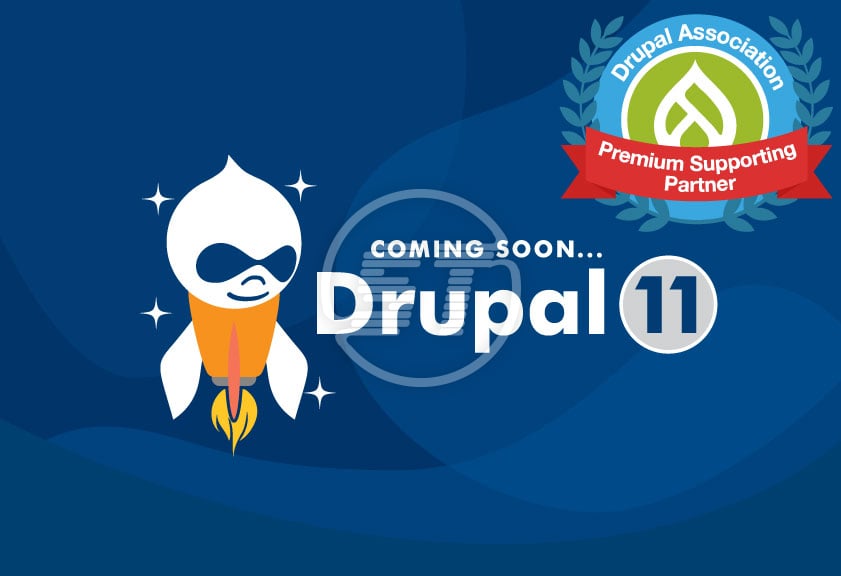
A glimpse at the journey from Drupal 10 to Drupal 11
Drupal 10 introduced several significant enhancements, including CKEditor 5, updated PHP and Symfony versions, the Claro admin theme, the Olivero front-end theme, modern JavaScript components in place of jQuery, Views Responsive Grids, and numerous others.
The incremental releases of Drupal 10 (like the recently launched 10.1, and the forthcoming 10.2, 10.3, etc.) are progressively integrating the roadmap for Drupal 11, slated for release either in August or December 2024.
The primary objective for Drupal 11, outlined during DrupalCon Portland 2022 by Drupal's creator Dries Buytaert, is to position Drupal as the preferred solution for ambitious site builders within the Open Web. Recently, Dries shared an updated blueprint for Drupal 11, devised after consultations with Drupal committers. It encompasses three major focus areas:
- Enhancing site builder tools for improved usability.
- Enhancing content editor tools for improved usability.
- Streamlining Drupal's upgrade and maintenance processes.
Drupal Version 11- What Is Beyond
The strategic vision for Drupal 11, known as "Composable Core," aims to redefine the landscape of the CMS platform, with a specific focus on empowering ambitious site builders. This involves enhancing site builder tools, streamlining the content editing process, and simplifying upgrades and maintenance.
Let's delve into the specifics:
Site Builder Tools Project Browser: Simplifies the discovery and installation of modules by offering high-quality module recommendations with one-click installation, reducing the learning curve.Starter Templates: Introduces new templates to lower the entry barrier for new Drupal users, reducing initial setup time and making maintenance comparatively easier.
Improved Administrative Interface: Enhancements in Field UI and administrative navigation improve the user experience, making content management easier. Content Editor Tools Enhanced Layout Builder and Modern Page Tools: Drupal 11 aims to enhance the Layout Builder, making page creation and editing easier by incorporating modern page-building tools while retaining Drupal's structured content strength. Improved Upgrade and Maintenance Mechanisms Automated Updates: Introduces automated updates where security patches and updates for Core and contributed modules are applied automatically, reducing technical complexity for users.GitLab Initiative: Integrates robust development tools through the GitLab Initiative for community involvement and technological innovation.
Great Module Migration: Aims for a 20% core size reduction through the Great Module Migration, allowing more resources for targeted innovations. Transitioning to Drupal represents a win-win scenario. Let's explore some migration tips and tricks:
Tips & Tricks From Innoraft Prepare for Drupal 11: Ensure website compatibility with Drupal 11 to avoid interruptions during the update process.
Stay Updated: Regularly review change logs to address obsolescence challenges with tools like phpstan-drupal and drupal-rector. Implement an approval process before publishing a changelog.
Check Dependencies: Verify dependencies such as core modules, contributed modules, themes, and external libraries. Continuously monitor Drupal community and repository updates.
Update and Test: Update Drupal core and modules to the latest versions for security and functionality enhancements. Test your website after updates and update custom code as needed.
Backup Before Updating:Always create backups of your website and database before making updates to revert in case of issues.
Conclusion
Building with Drupal means continually improving your website. Conduct a comprehensive website audit, engage with Drupal experts, and stay updated with Drupal's version to ensure seamless migration and maximize business revenue.
